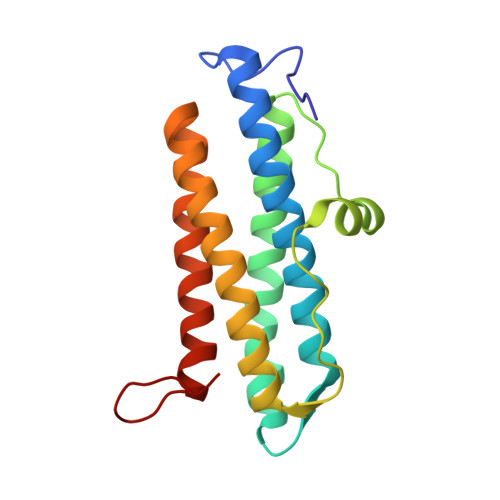A Tale of Tails: Deciphering the Contribution of Terminal Tails to the Biochemical Properties of Two Dps Proteins from Streptomyces Coelicolor
Hitchings, M.D., Townsend, P.D., Pohl, E., Facey, P.D., Jones, D.H., Dyson, P.J., Del Sol, R.(2014) Cell Mol Life Sci 71: 4911
- PubMed: 24915944
- DOI: https://doi.org/10.1007/s00018-014-1658-4
- Primary Citation of Related Structures:
4CY9, 4CYA, 4CYB - PubMed Abstract:
Dps proteins are members of an extensive family of proteins that oxidise and deposit iron in the form of ferric oxide, and are also able to bind DNA. Ferroxidation centres are formed at the interface of anti-parallel dimers, which further assemble into dodecameric nanocages with a hollow core where ferric oxide is deposited. Streptomyces coelicolor encodes three Dps-like proteins (DpsA, B and C). Despite sharing the conserved four-helix bundle organisation observed in members of the Dps family, they display significant differences in the length of terminal extensions, or tails. DpsA possess both N- and C-terminal tails of different lengths, and their removal affects quaternary structure assembly to varying degrees. DpsC quaternary structure, on the other hand, is heavily dependent on its N-terminal tail as its removal abolishes correct protein folding. Analysis of the crystal structure of dodecamers from both proteins revealed remarkable differences in the position of tails and interface surface area; and provides insight to explain the differences in biochemical behaviour observed while comparing DpsA and DpsC.
- College of Medicine, Swansea University, Singleton Park, Swansea, SA2 8PP, UK.
Organizational Affiliation:

















